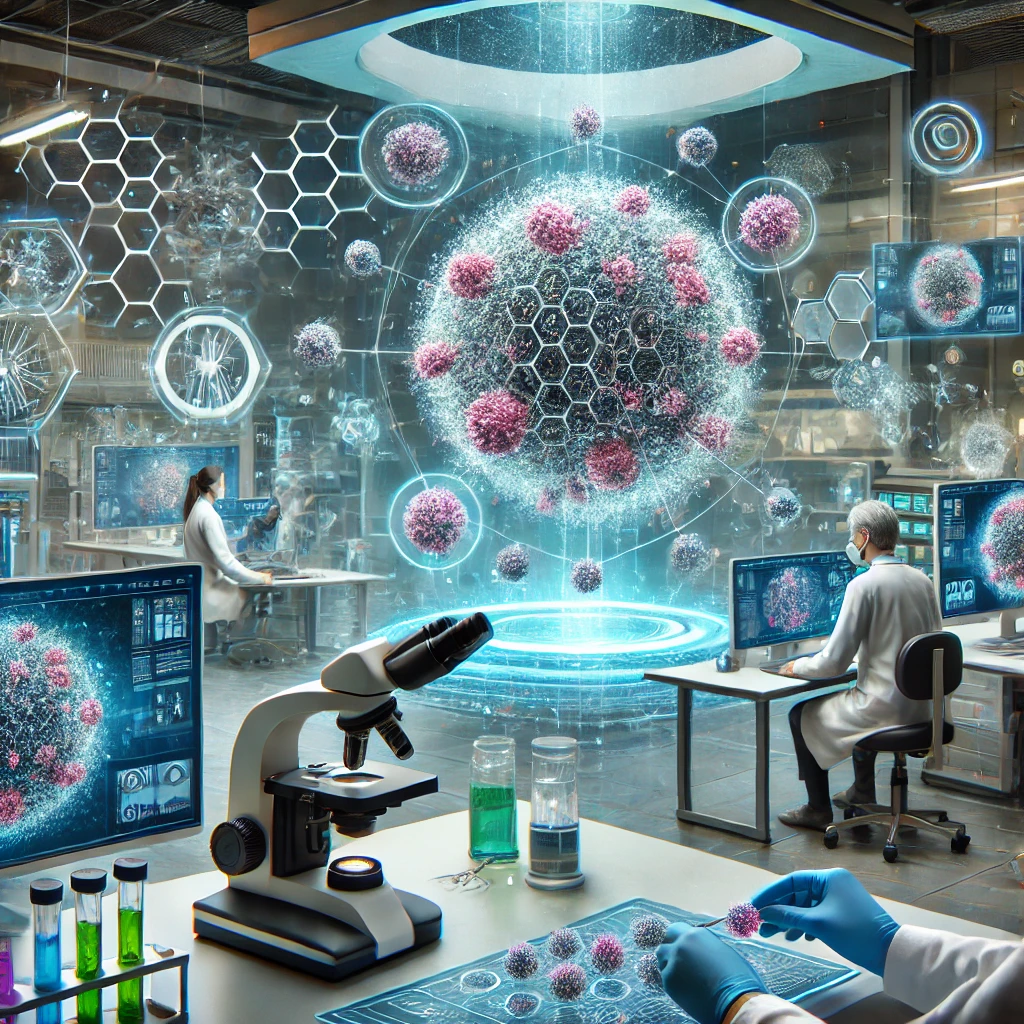Today, cancer is a difficult disease to treat, and current anti-cancer therapies suffer from problems that affect normal cells as well. Nanotechnology has the potential to precisely target cancer cells, reduce side effects, and enable economically efficient and personalized treatments. Treatment with nanoparticles has the potential to overcome the limitations of conventional therapies and could be applied to treat not only cancer but also a variety of other incurable diseases.
Cancer is perhaps the most prevalent and most difficult disease to treat today. With the development of modern medical technology, the treatment for cancer is improving day by day, and there are many different anti-cancer drugs and anti-cancer treatment techniques. However, the problem with current cancer treatment technologies is that they affect not only cancer cells but also normal cells, causing various side effects. In addition, there are many different types of cancer, and the characteristics of cancer cells are different for each patient, but the number of anti-cancer drugs is limited. As a result, the efficiency of chemotherapy is not very high. On the other hand, the rapid metastasis of cancer cells is a problem that neither anticancer drugs nor anticancer treatments can keep up with.
In fact, the causes and processes of cancer are very complex and diverse. Genetic factors, environmental factors, lifestyle habits, and other factors combine to cause cancer. Because of this complexity, treating cancer is not simple, which is why personalized treatment is so important. While current medical technology is unable to take all of these factors into account, future technological advances hold the promise of overcoming these limitations.
Today, we’re going to introduce you to a technology that could solve these problems. One such technology is nanotechnology for cancer treatment. Nanotechnology is the creation and manipulation of materials on a nanometer (billionth of a meter) scale. Since molecules and atoms, the most basic units of matter, are nanometers in size, this allows for more precise and accurate medical treatments.
After obtaining the protein information of the cancer cells of a cancer patient, a factor that can bind to the protein is attached to the nanoparticle and injected into the patient, and the nanoparticle reacts only with cancer cells and does not affect normal cells. If an anticancer drug is attached to the nanoparticles that can react with cancer cells, the nanoparticles will be able to find and eliminate cancer cells, and if an inhibitor that prevents cancer cells from replicating is attached, the cancer cells will be able to prevent metastasis. On the other hand, since the protein information of cancer cells is obtained and treated for each patient, it is possible to customize anticancer treatment according to the personal characteristics of the patient and the type of cancer the patient has.

Another characteristic of nanoparticles is that they can have different colors depending on their size. When cells are stained with these particles, the color does not change with time or environment, unlike when cells are stained with conventional dyes. This property makes it possible to selectively stain only cancer cells, making it easier to distinguish cancer cells from other cells, which will be very helpful in surgery to remove cancer cells.
The use of nanoparticles in anticancer therapy also has economic benefits. The nanoparticles can be recovered after the treatment is over. If the nanoparticles used for treatment are labeled with an N pole, the nanoparticles that remain in the bloodstream after treatment can be retrieved using the opposite stimulus (S pole). This makes it more economically efficient because it can be recycled many times, unlike conventional anticancer drugs that can only be used once, regardless of whether they work or not.
Of course, there are challenges in handling nanoparticles. For one thing, the technology to mass-produce nanoparticles in uniform sizes is still limited. Professor Hyun Taek-Hwan Hyun’s lab at Seoul National University’s Department of Chemical and Biomolecular Engineering has developed this technology, but it is only available for certain metals. There is also a lack of technology to control the nanoparticles. In order to use nanoparticles for cancer therapy, it is necessary to be able to attach various particles to the nanoparticles, but there are still many difficulties because it requires nanoscale control technology. In addition, nanoparticles are mainly made from inorganic materials (metals), and the properties of these particles are not yet fully understood, so we don’t know what the risks are. However, research is underway to create non-toxic nanoparticles, and technologies are being developed to apply nanoparticles to various fields. The technology to control nanoparticles is also improving. Therefore, the prospects for nanoparticle-based anticancer therapy are bright.
Cancer treatment using nanoparticles is gaining attention because it can overcome the shortcomings of existing treatments and is more effective in many ways. With nanotechnology, we can attach anti-cancer drugs to maximize the effectiveness of the treatment, so conquering cancer is not just a dream of the future. There is a lot of scope for nanotechnology to be applied not only to cancer, but also to other difficult and incurable diseases. With the development of nanotechnology, we will be one step closer to living a long and healthy life.